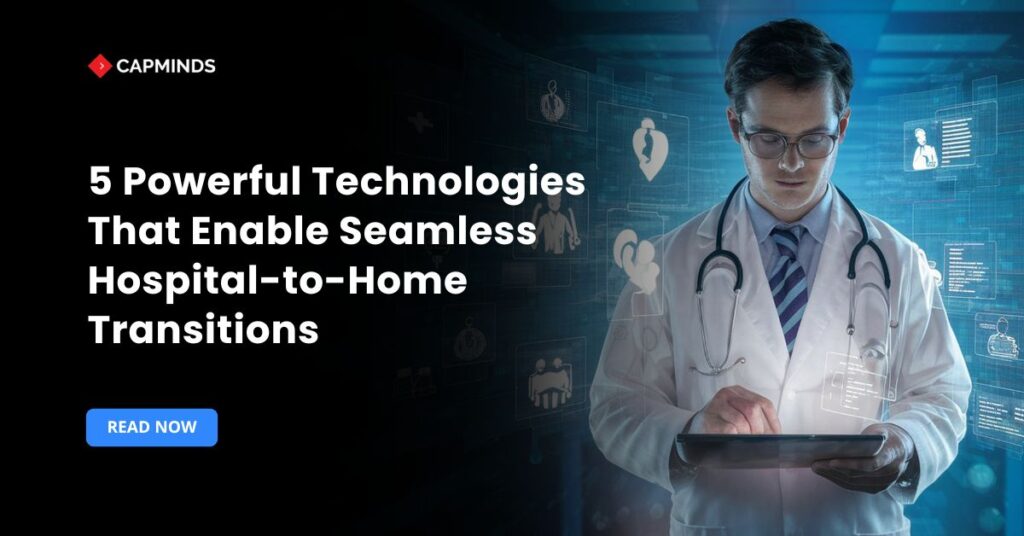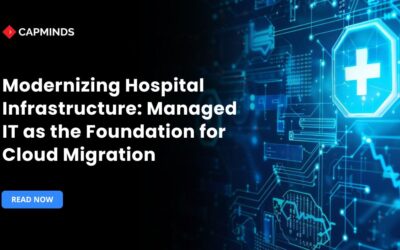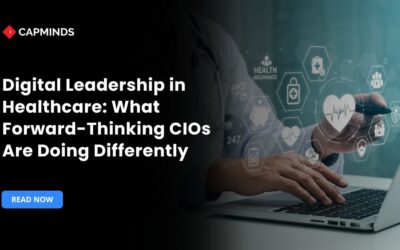5 Powerful Technologies That Enable Seamless Hospital-to-Home Transitions
The transition from hospital to home is a vulnerable phase in patient care. Gaps such as incomplete handoffs, confusing discharge instructions, and lack of timely follow-up can jeopardize patient safety and lead to avoidable readmissions. In the U.S., where preventing readmissions is a key quality metric, healthcare leaders are focused on using technology to bridge these gaps.
Experts emphasize that comprehensive discharge planning, including thorough medication reconciliation and clear instructions for patients and caregivers, is critical to safeguarding patient well-being.
Technologies that Enable Hospital-to-Home Transition
1. Telehealth and Virtual Care Platforms
Telehealth and virtual care solutions have become vital components of post-discharge care. By enabling video visits, remote triage, and virtual check-ins, these platforms let doctors and nurses follow up with patients in real time without requiring a clinic visit.
Patients can report symptoms, show wound healing by camera, or discuss medication questions via secure telemedicine apps.
- As one review notes, telehealth is considered an “innovative tool” to improve patient safety and care continuity.
- For example, a 2024 study found that patients in a structured telemonitoring program had far fewer readmissions and emergency visits than similar patients who did not receive such monitoring.
By keeping patients under continuous observation and giving them instant access to advice, telehealth turns a once-vulnerable discharge into a proactive, guided recovery phase.
2. Remote Patient Monitoring (RPM) and Wearable Devices
Continuous monitoring devices extend clinical oversight into the patient’s home. Wireless blood pressure cuffs, pulse oximeters, weight scales, glucose meters, and wearable fitness trackers can all feed daily health data to care teams. This constant stream of information allows clinicians to spot concerning trends (such as steadily rising blood pressure or rapid weight gain) and intervene quickly.
Integrating Remote Patient Monitoring into discharge planning has proven very effective: for example, one study reported that equipping high-risk patients with home monitoring devices after discharge significantly reduced their rehospitalization rates.
Health experts now list RPM alongside home health services as fundamental to safe transitions. RPM empowers patients to take an active role in their recovery: if a home reading falls outside a safe range, the system can alert the care team (or even notify the patient), prompting timely outreach and therapy adjustments.
3. Electronic Health Records (EHR) and Interoperability Tools
Reliable information flow is the backbone of seamless transitions. Advanced EHR systems and interoperability platforms ensure that discharge summaries, medication lists, lab results, and care plans created in the hospital are immediately shared with outpatient providers and home health agencies.
- No longer does a patient arrive home with missing data; instead, every clinician sees a unified, up-to-date record.
- As one informatics study emphasizes, healthcare IT is “vital for storing and exchanging health information during patient transitions”.
- This underscores that fully interoperable records are essential for safe handoffs.
- For example, smart interface design can prevent data loss or alarm fatigue.
Related: EHR in 90 Days: Accelerating Digital Transformation in Healthcare
Integrated EHRs ensure each provider sees the whole patient story, preventing errors and duplicate testing.
4. Predictive Analytics and AI-Driven Tools
Hospitals increasingly use data analytics and AI to anticipate which discharged patients need extra attention.
Predictive models analyze medical history, social factors, and even home-monitoring data to score each patient’s risk of complications or readmission. By “leveraging predictive analytics,” providers can identify patients at elevated risk and focus resources proactively.
- An AI platform might flag a patient as high risk if their home device data shows concerning trends or if multiple risk factors align.
- Such alerts then trigger targeted interventions, for instance, scheduling an early nurse follow-up or medication review.
- Industry experts confirm these tools are effective: technology now offers “real-time access to health records and predictive analytics to identify patients at high risk”.
- This means care teams receive automated alerts when a discharged patient’s data indicates trouble, allowing them to act before a problem becomes critical.
5. Patient Engagement and Education Platforms
Engaging patients and caregivers in their care is another crucial piece of the puzzle.
Digital engagement tools, including patient portals, mobile health apps, and automated messaging systems, can deliver tailored education, reminders, and support after discharge.
- Clear patient instruction has long been shown to improve outcomes: providing concise, culturally appropriate teaching about medications, warning symptoms, and follow-up steps dramatically reduces confusion and readmissions.
- A hospital might send each discharged patient a series of brief educational videos or checklists through a secure portal. Automated text or phone reminders can prompt patients to take medications or attend therapy sessions as scheduled.
- By meeting patients on familiar devices with clear, supportive messages, these tools reinforce the discharge instructions.
- In the era of smartphones and wearables, digital engagement meets patients where they are and maintains momentum in the healing process.
Investing in these technologies creates a cohesive safety net for patients leaving the hospital. Telehealth visits, continuous monitoring, interoperable records, predictive alerts, and engagement tools all work in concert to ensure that potential problems are caught early and that patients remain supported at home.
Hospitals and health systems embracing this integrated approach are better positioned to meet quality goals, improve patient satisfaction, and avoid costly readmissions.
Empower Every Transition: CapMinds Digital Health Solutions for Hospital-to-Home Care
Seamless transitions from hospital to home demand more than discharge paperwork; they require a connected, tech-driven ecosystem.
At CapMinds, we deliver the tools and expertise needed to ensure patient care continues effortlessly beyond hospital walls.
Our digital health tech solutions empower providers with:
- Telehealth Platform for virtual consultations and real-time follow-ups
- Remote Patient Monitoring (RPM) with wearable integration for continuous home care
- Hospital Management System Development to Streamline Discharge Workflows
- EHR Development & Interoperability Solutions for unified, real-time patient data
- Patient Engagement Platforms to improve education and post-discharge compliance
Whether you’re looking to reduce readmissions, improve continuity of care, or drive better patient outcomes, CapMinds helps you build a truly integrated hospital-to-home care model.
Let’s shape the future of patient-centered care, together. Contact CapMinds and let’s discuss how our digital health solutions can fit your unique needs.




